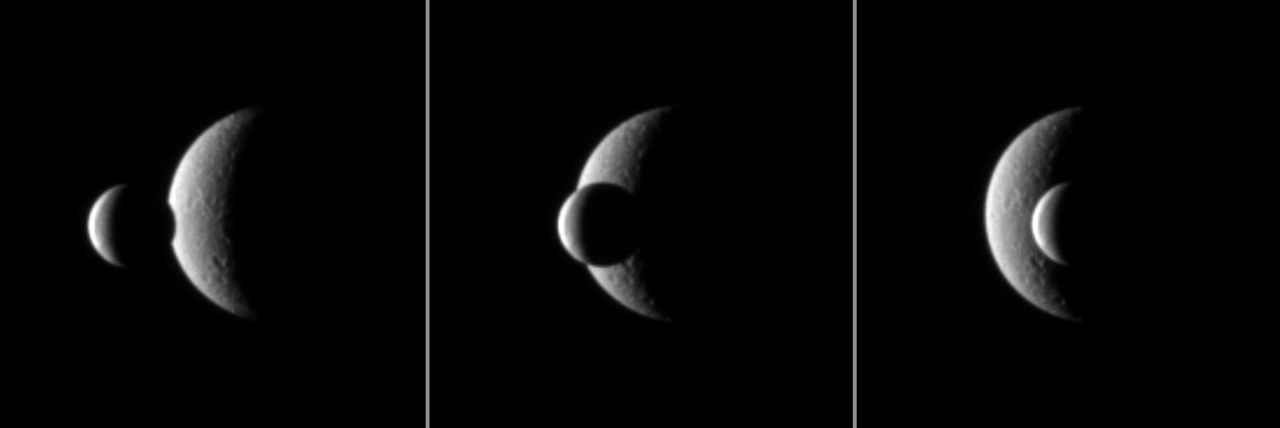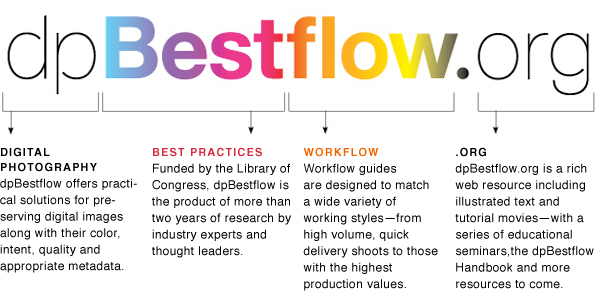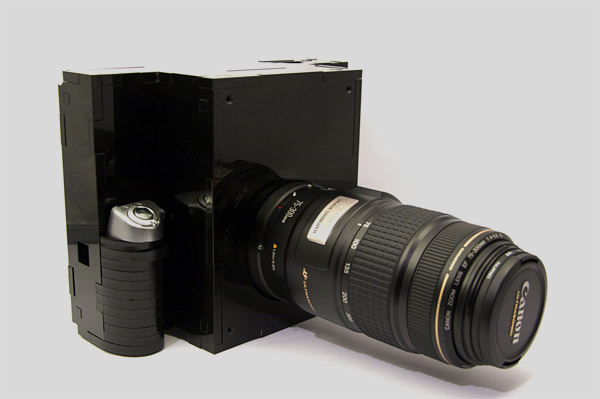False color extreme ultraviolet photo of the sun taken by the NASA Solar Dynamics Observatory. The zoomed-in video (40MB Quicktime .mov) of the solar flare you see on the left is incredible.
Tag: photography
-
Solar Flare

-
Saturn’s Moon Enceladus Transiting in Front of Rhea

Saturn’s moon Enceladus transiting in front of its larger moon Rhea, as seen from a couple million miles away by the Cassini spacecraft, in photographs that span about one minute’s worth of time. That we can know to point cameras at this kind of event and get images this nice is a bit of a wonder to me.
(Via Discover)
-
Kottke Linked to This Time Stitch Stretch Video
Kottke linked to this time-stitch-stretch video, which is kind of fun to watch. Reminds me of the 1990’s video morphing work done using Elastic Reality, especially Michel Gondry’s video for Björk’s “Joga” (which I think was done with ER…anyone know?)
-
John Balestrieri’s Generative Painting Algorithms

John Balestrieri is tinkering with generative painting algorithms, trying to produce a better automated “photo -> painting” approach. You can see his works in progress on his tinrocket Flickr stream. (Yes, there are existing Photoshop / Painter filters that do similar things, but this one aims to be closer to making human-like decisions, and no, this isn’t in any way suggestive that machine-generated renderings will replace human artists – didn’t we already get over that in the age of photography?)
Whatever the utility, trying to understand the human hand in art through code is a good way to learn a lot about color theory, construction, and visual perception.
(Via Gurney Journey)
-
Pretend to Be Radiohead with This Point Cloud Instructable
Pretend to be Radiohead with this Instructable guide to 3D light scanning using a projector, camera, and a bit of Processing! This is designed to create the visualization seen in the video above, but you could also use the point data for output on a 3D printer, animation package, etc. Neat.
(Via Make)
-
Japanese Bromide Baseball Card Prints

Besuboru Bromides, John Gall’s beautiful collection of Japanese baseball card bromide prints (ブロマイド). The full set can be found on his Flickr account, along with a billion other great graphic arts images. I think I need to trawl through his whole photoset now, and pick up his book Sayonara Home Run!…
(Via Monoscope)
-
dpBestflow: Digital Photography Best Practices

The American Society of Media Photographers has a new resource up for people working with digital images: dpBestflow rounds up the best practices and workflows for digital photography, in neat, easy-to-digest pieces, with tips on subjects ranging from camera file formats to desktop hardware to room lighting. If you look at their handy Quick Reference overview, be sure to note that each bullet point links to a more in-depth piece if you’re interesting in drilling down for more info…
(Via John Nack)
-
The Last Days of Gourmet Magazine

From Last Days of Gourmet, a photo set depicting the offices of the now-defunct magazine. There are plenty of better photos in the group, lots of scenes of office supplies in the trash and empty workspaces, but I liked this one the best: evidently someone went all Hawkeye Pierce.
(Via Coudal Partners)
-
The Stanford Frankencamera to Help Further the

To help further the field of computational photography, a team at Stanford is working on a homebrewed, open source digital camera that they can sell at-cost to other academics in the field. Right now it’s pretty big and clunky-looking, but a camera that can be extended with the latest image processing techniques coming out of the labs would be very sexy indeed. There’s a recent press release that’s worth reading about the team, along with a video and an animation or two to explain the project.
Those that want to tinker with their existing store-bought cameras might want to check out the firmware hacks that are floating around out there, like the excellent CHDK software (GPL’ed, I think) that runs on most modern Canon digital point-and-shoot and dSLR cameras. With a little bit of elbow grease and some free tools you can add a lot of professional(ish) features and scripting support to your low-end camera.
(Via John Nack)
-
Dark Flash Photography

Another paper from the upcoming SIGGRAPH 2009 conference: Dark Flash Photography. The researchers have developed a camera flash that uses a combination of infra-red and and ultra-violet light to illuminate a scene before capture, and an algorithm to denoise and color-correct the otherwise dimly-lit normal digital photo, producing a low-light image that is both noise-free and sharp (no need for long exposure, so no worry about camera shake or the subject moving). Seems like a killer idea, and immensely useful.
The image above is the creepy-looking multi-spectral version – be sure to click through to their site to see the final photo compared with the noisy ambient light version.
(Via New Scientist. Photo: Dilip Krishnan, Rob Fergus)
